Shifting Gears: From Car Culture to the Freedom of Choice - My Journey Beyond Society's Default
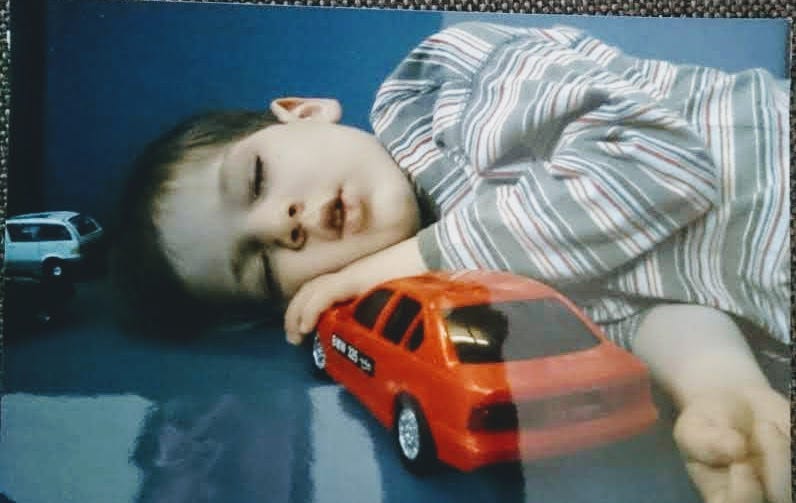
Yep- That’s me. A childhood photo of me, embracing a toy car as I sleep - Or was I already tired of car culture?
The First Word: A Nation's Obsession with Cars
Germany’s Finance Minister, Christian Lindner recently revealed his first word on planet earth was “Auto” (car).
That may not come as a surprise for a politician who is known for sharing good relations with Porsche - Yet would be no wonder either for any regular person who grows up in Germany. But what if the word would have been (insert addictive drug)?
This level of acceptance or blindness towards car culture or dependency is a testament to a nation’s love affair or obsession with the automobile.123
Toys of Tomorrow: Conditioning Through Play
Germany, while being a proud nation of automative industry historically grew more car-dependant and still has a widespread stigmatization of people acknowledging the negative externalities of driving and therefore embracing a car-free life. A relict of times where the car was more than a machine - a member of the family, an aspiration, a way of life - a vehicle to stay autonomous and free amidst the rural exodus it caused.
Let’s be honest: Not all children’s toys are designed by good-willing people. I would claim, that most children’s toys prepare our kids for the consumerist society we live in.2
I owned multiple crates of toy cars. The toy journey often continues in the virtual realm: Most simulation games such as Need For Speed, Truck Simulator, Train Simulator focus on one mode of transportation.
From GTA to Reality: A Lesson in Mobility Choices
Grand Theft Auto, however has more to offer. While media psychologists would highlight the optional violence the game carries, I would argue that overall it still had a positive impact on my life.
What is more violent? Borrowing a car, bicycle, boat or plane in GTA - or forcing a family in Sims to live in a car-dependant suburb ?
GTA presents a microcosm of real-world mobility choices. Why settle for a supercar when you can pedal a BMX like a boss? And who knew that ‘borrowing’ vehicles could teach us about shared economies? I mean, sure, in the real world, we call it ‘car-sharing’, and it’s totally legal. In GTA, everyone is created equal.
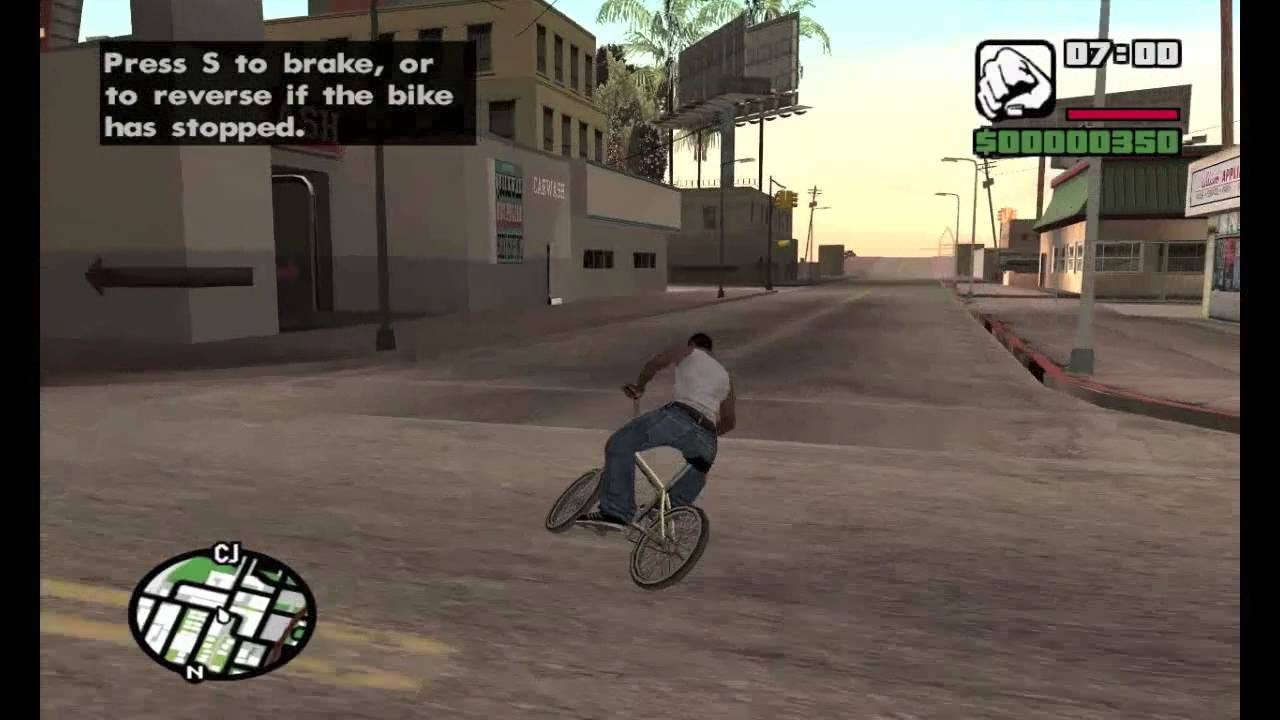
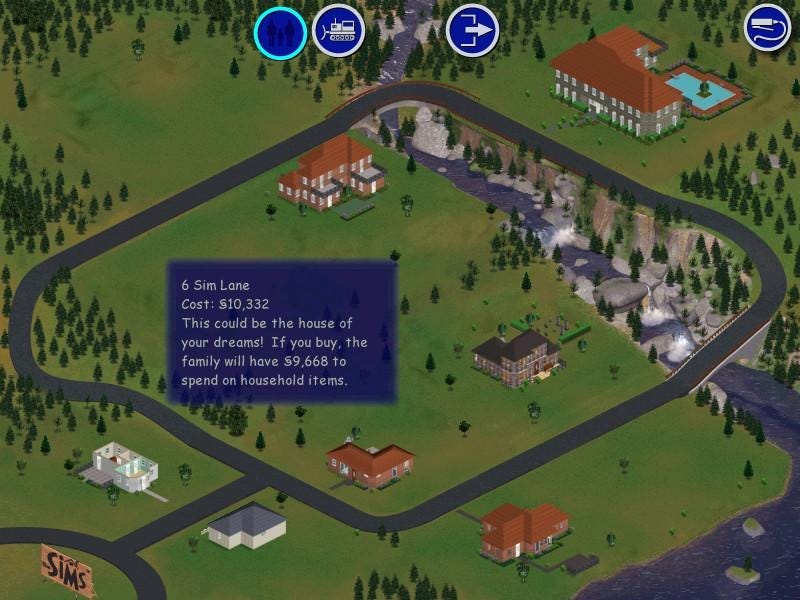
A screenshot from the video game GTA, showcasing a character flexibliy a bike over a car. For each mission there is the right tool.
The Manufactured Myth of Motorized Freedom
Recent writing by Paolo Scaramuzza helped me connect the personal with the political: much of what we accept as “car culture” was deliberately manufactured.4 Automakers and allied interests reframed streets as the car's domain (the history of the term "jaywalking" is a stark example), shifted blame onto pedestrians, and normalised infrastructure and laws that favour vehicles over people. Anecdotes like Sweden’s Dagen H (the 1967 side‑of‑the‑road switch) and experiments where cities briefly turned off traffic lights show a pattern: removing over‑engineering forces collective attention and often makes streets safer.
Scaramuzza echoes André Gorz’s critique that cars, sold as freedom, can instead trap owners with debt, isolation, and dependence - a useful lens for rethinking why test drives and material milestones feel so seductive yet hollow.4
These historical and policy anecdotes made my own shift - from aspiring car‑owner to habitual cyclist - feel less like a personal failure and more like awakening to a designed system.
Test Drives and Materialistic Milestones
In 2013, when I turned 18, I would spend my free time with many test rides of cars that I was interested in. It was for the means of driving practice - but also means of motivation in life - the materialistic milestone before (what’s next?) - buying a house.
At least in my home town of Frankfurt - the financial capital, where material status is encouraged by the investment bankers working their way up in the city center and the suburbanite (or should I say “**SUV-**urbanite” dream is kept up by people living in the surrounding districts. People, who, when they leave their house, seemingly want to do so in (what the industry told them to be) the most prestigious way.
2013 was the same year, when I also got to drive a Tesla for the first time - a car that hummed with electricity rather than roared with gasoline. Back then it was clear to me: My next car would be a Tesla.
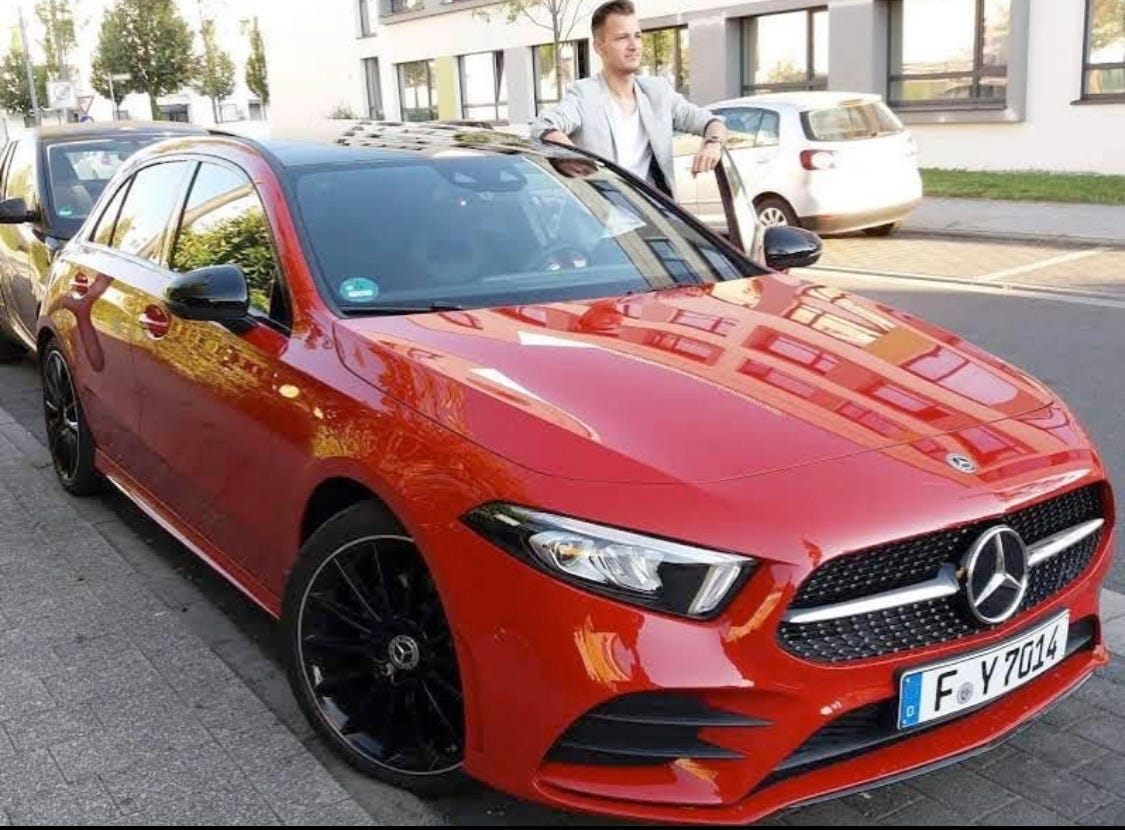
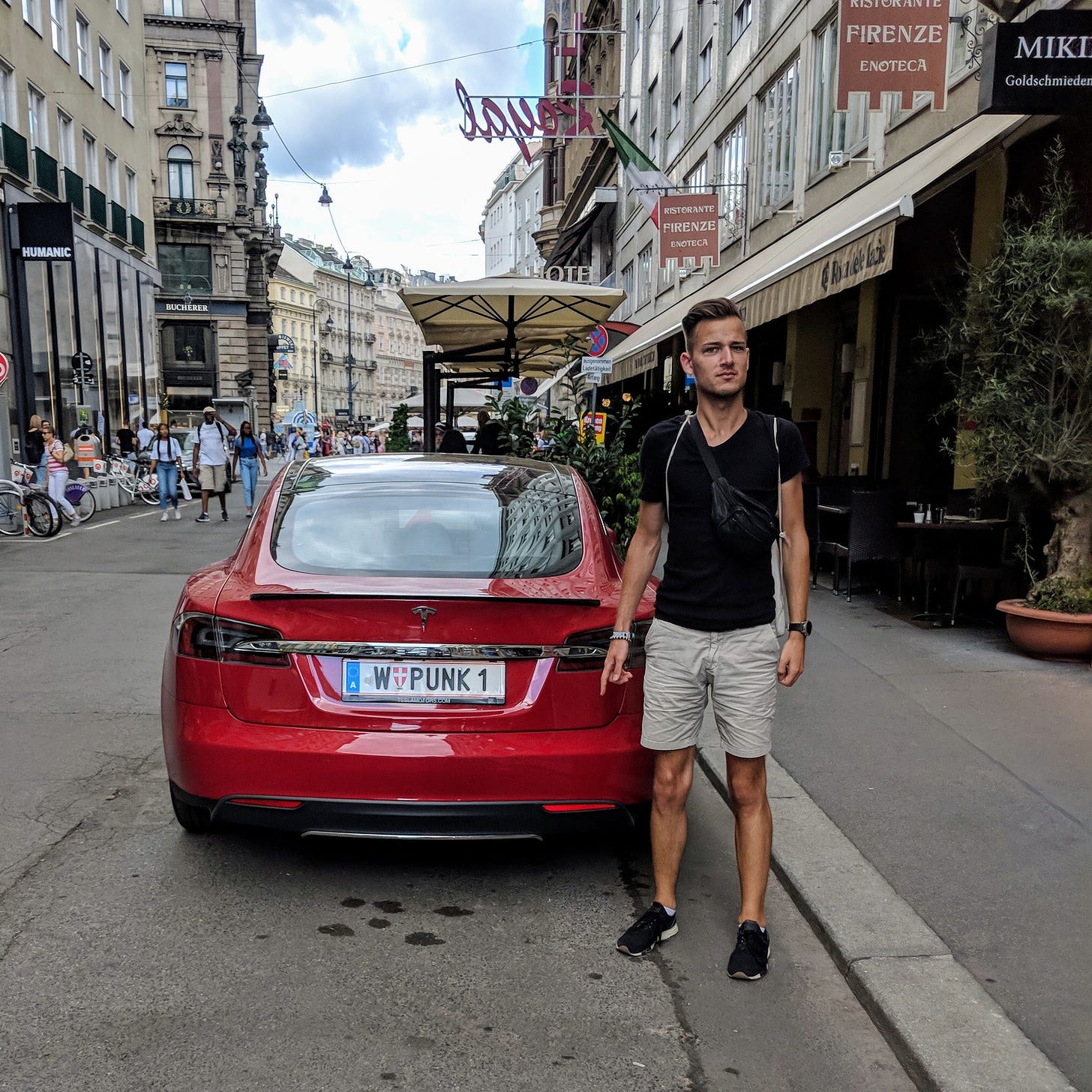
Posing in front of cars - the societal standard of young and ambitious guys. But is it the right tool?
A Paradigm Shift: Moving to Berlin
2 years later, I moved to Berlin. Just like in GTA, suddenly I was living in a city with diverse options to choose from
In Berlin, I learned other priorities. Outstanding public transport, high availability of car-sharing options at every corner, one tap away (like Uber - but much cheaper and you get to drive yourself).
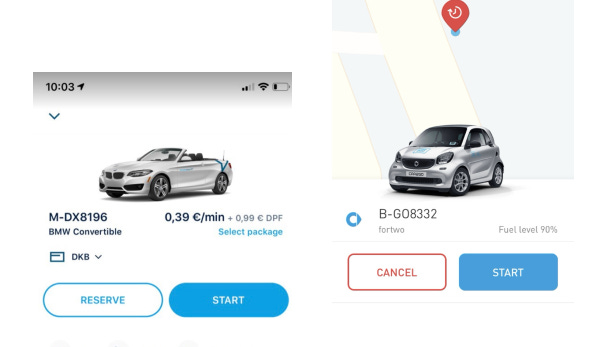
Heading out with friends on a sunny weekend day? Cabriolet! Heading home alone at 2am? The smallest car possible.
Bottom line: My own car became a burden.
The Dutch Connection: Redesigning Mobility
When I moved to the Netherlands for my studies, I did not expect what was going to happen with me. My course of study, User Experience Design, was mostly built around improving experiences for people. I expected mostly digital experiences: Some research, prototyping, frontend development.
However, as I learned, experience design can also affect everyday aspects of life, such as mobility choices. As a designer, my perception changed, I became increasingly curious on how The Netherlands applies design principles to urban planning and what we can learn from Dutch cycling culture and DE–NL comparisons.56
I assumed to be a “car guy” - but I had to learn that behaviours are shaped by the accessibility of options in our environments
Turned out: The Dutchies have some well designed interfaces for everyday transportation. For users of cars, trains, bicycle, wheelchairs, feet alike. They got me hooked on the bicycle and let me forget the car for good.
Who doesn’t want a country that cares about their citizens not being killed on their way to work - regardless of mobility choice? This very humane consideration just made me love paying taxes there.
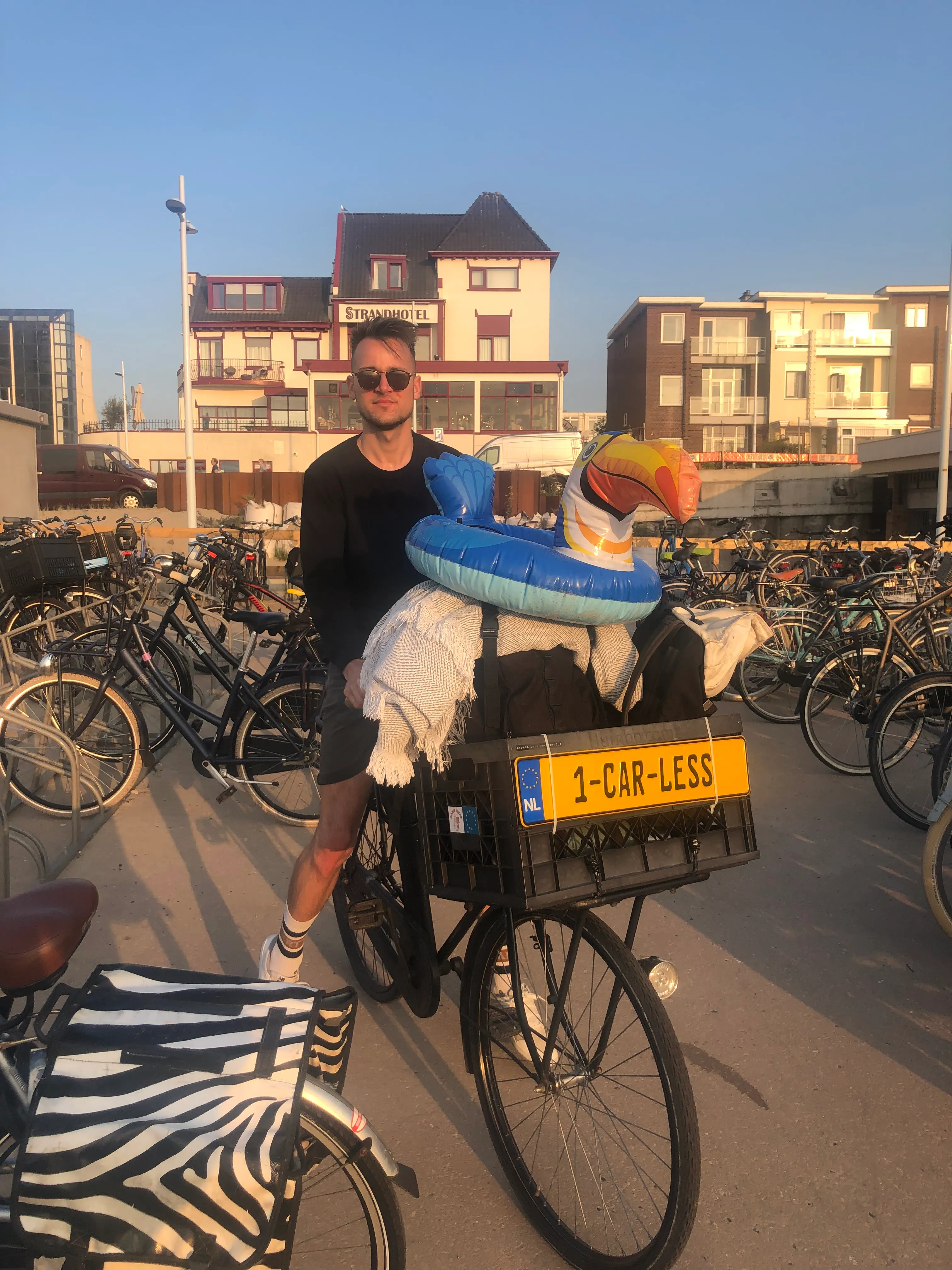
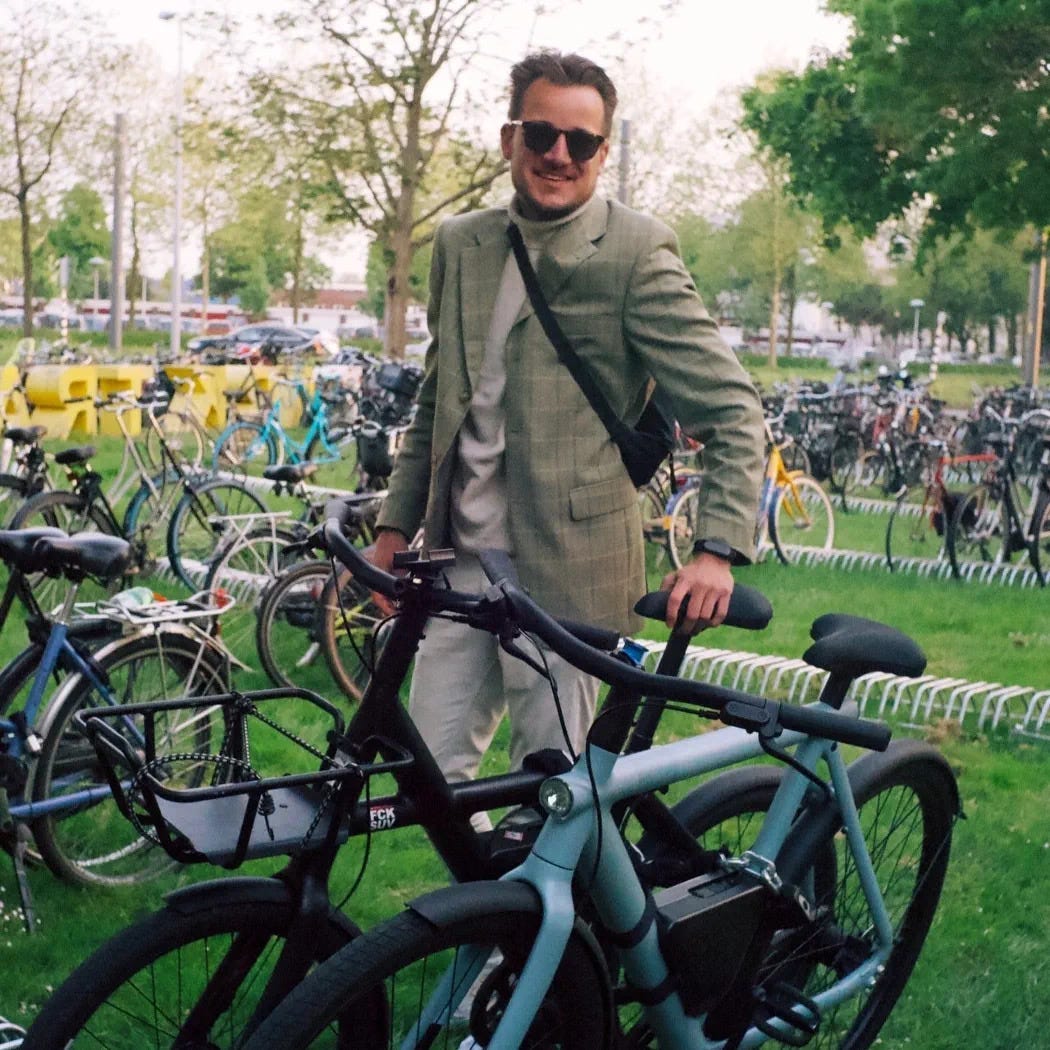
Not perfect - rising car ownership and shifting circumstances
The Dutch example is powerful, but it's not without contradictions. Recent data shows the Netherlands' vehicle fleet has continued to grow (for the first time passing ten million registered passenger cars), and car ownership is rising in many areas. This trend complicates the simple "Netherlands = bike utopia" narrative and reflects structural pressures: housing affordability and longer commutes, patchy regional public-transport coverage, and a market shift toward larger, heavier vehicles (SUVs, hybrids and EVs with battery weight).Similar developments - and sparking discussions about vehicle size and parking challenges are seen in the UK.
Policy choices matter: incentives, housing policy, and investment in regional transit can either reinforce cycling and transit or unintentionally shore up car use. The upshot for advocates and designers is pragmatic: celebrate and learn from Dutch design, but also confront the real trade-offs and political/economic drivers that push car ownership up.
Embracing Freedom of Choice
It was the Dutch affinity for everyday cycling (or simply an open, freedom-of-choice ecosystem) that rewired my car-brain completely.7 The Netherlands presented a new narrative - of cities built for people, not cars. My move for studies became a larger journey towards sustainable living, as I integrated into a society where everyday cycling is as habitual as breathing. A society that, more than my home country seems to know how to apply their tools.
As it turned out, the key to happiness for me isn’t a Porsche in every driveway; it’s about having choices. It’s about creating spaces where cars, bikes, and pedestrians coexist in harmony, like a well-choreographed flash mob. And when those choices are supported by safe infrastructure, the environmental and health gains are measurable.87
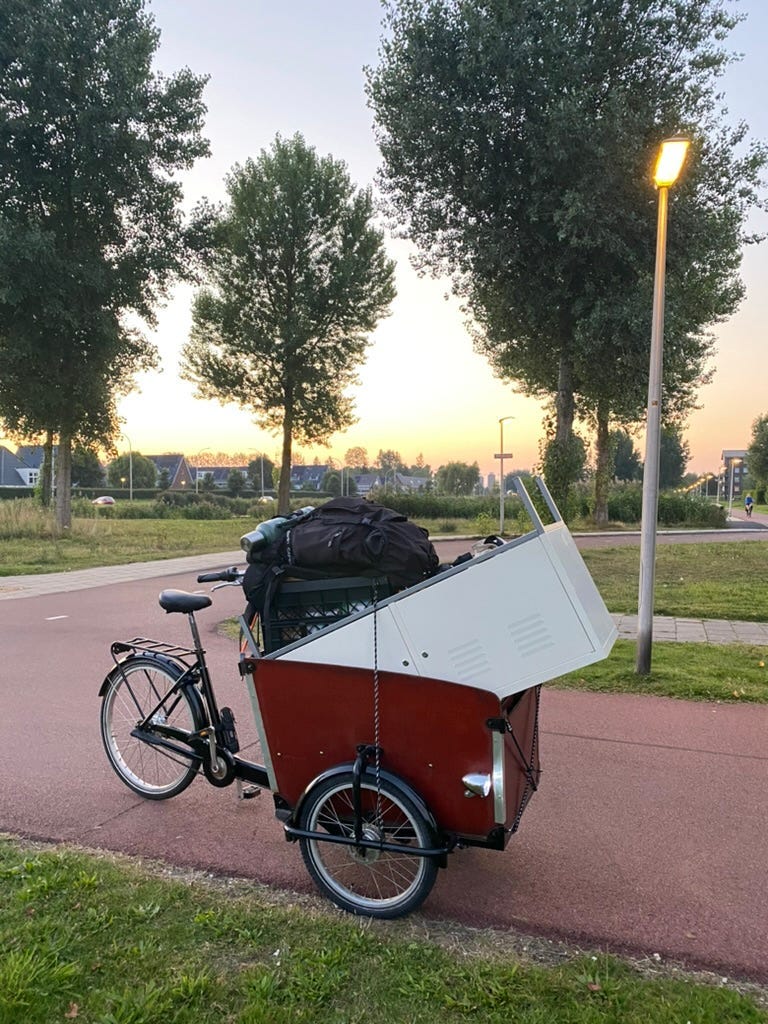
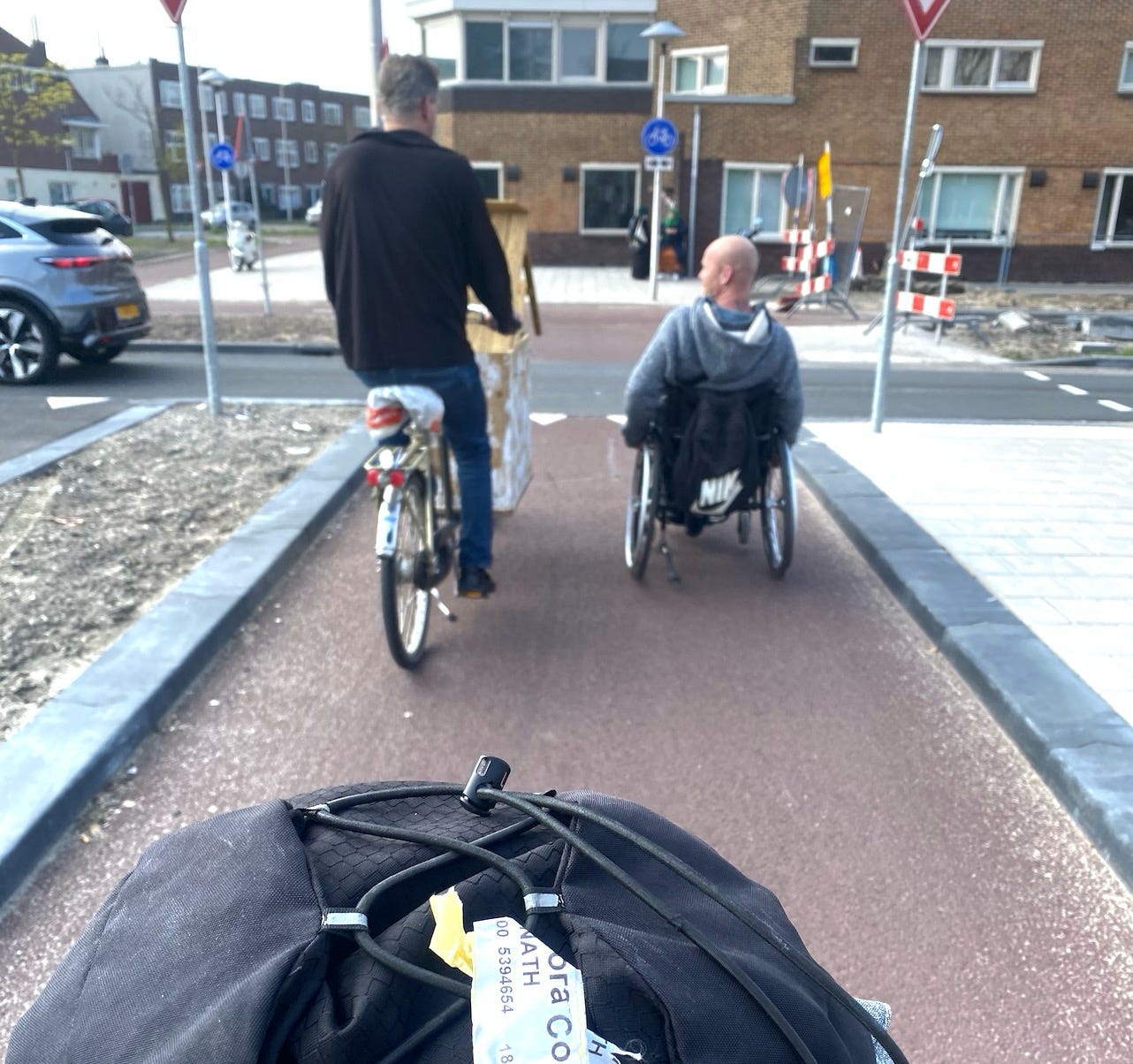
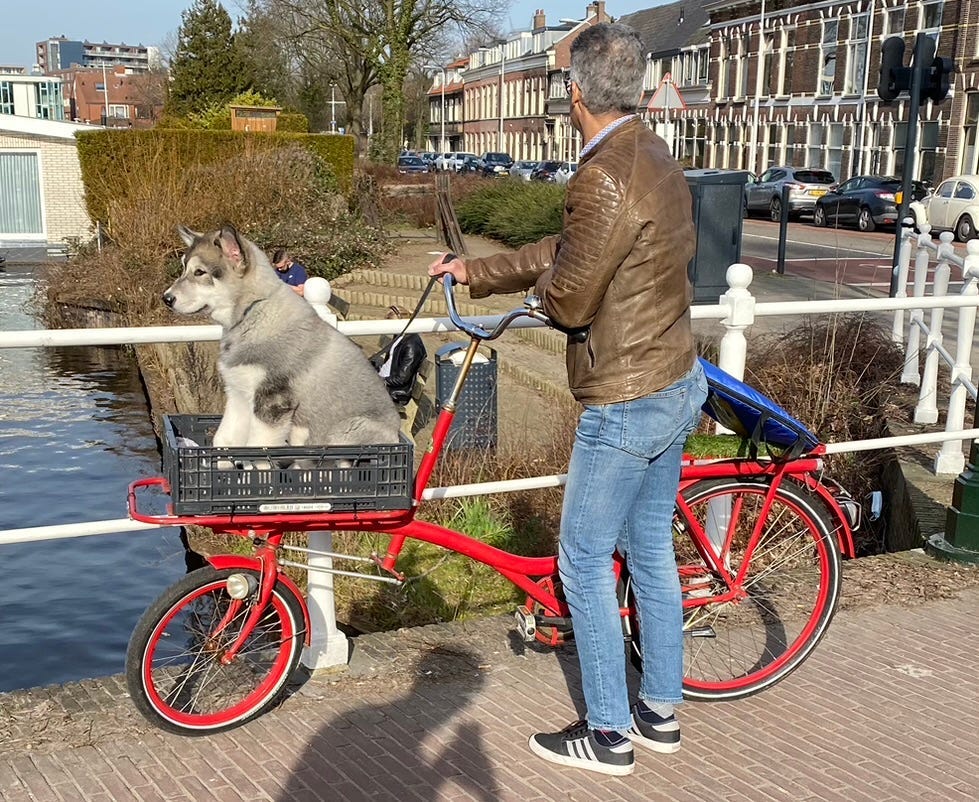
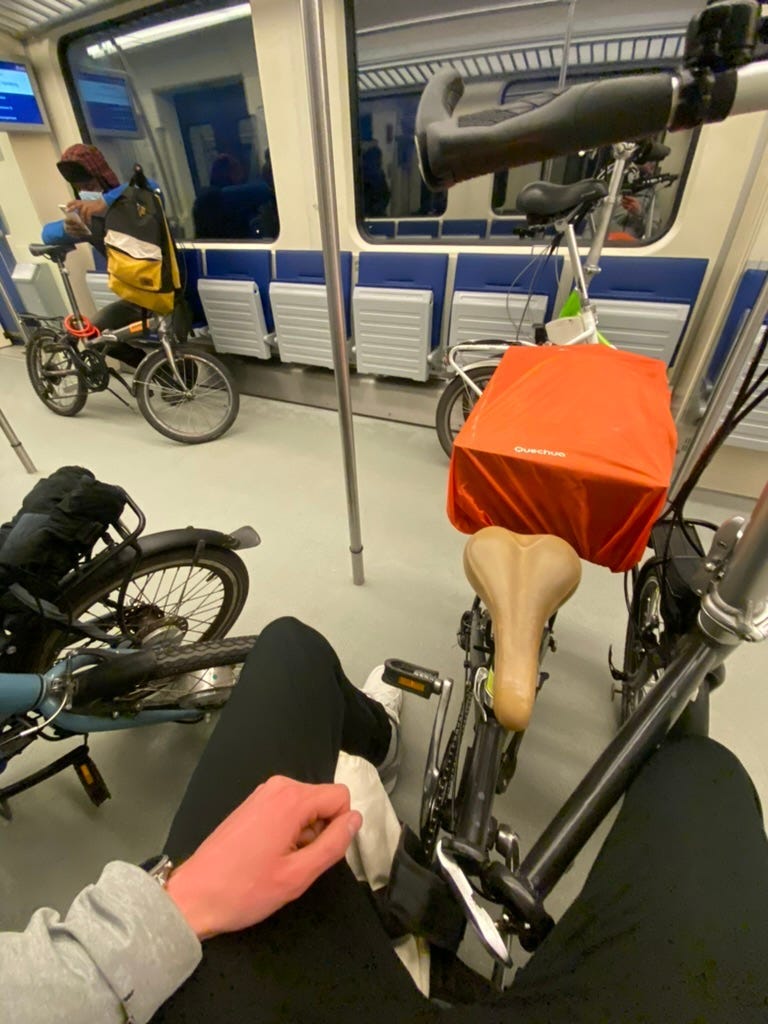

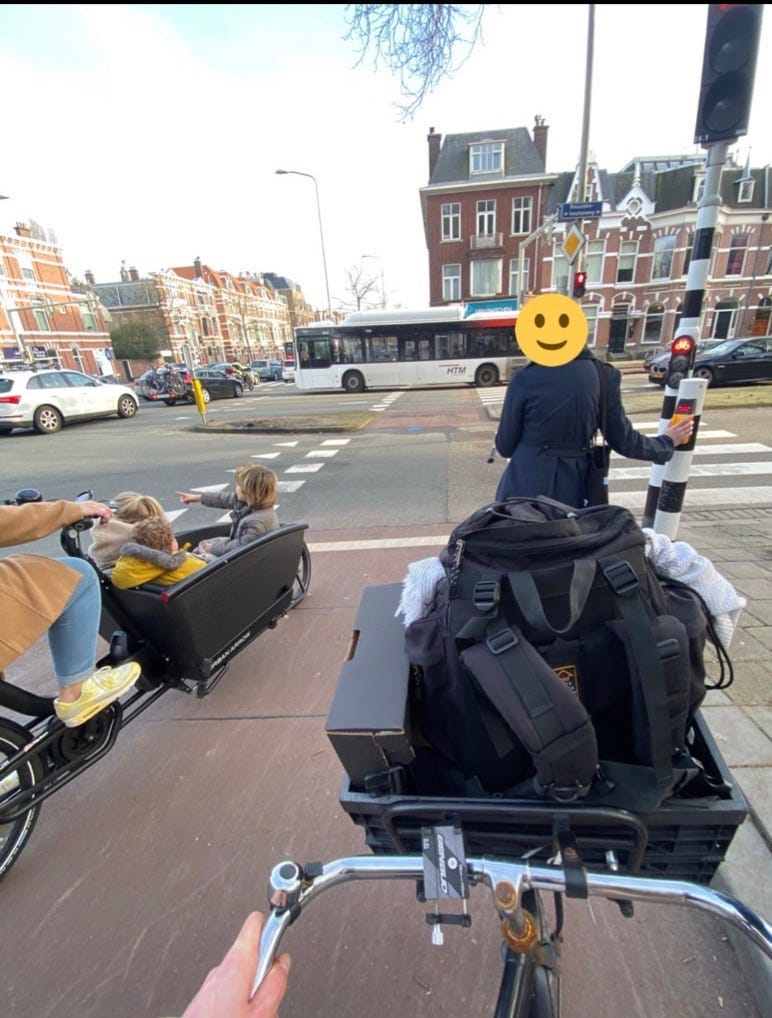
A Balanced Appreciation
I still admire the car as an invention - utilitarian, powerful, and indispensable in many parts of modern life. Carsharing excites me as a model that reduces ownership costs and waste. Our food supply depends on trucks; emergency vehicles save lives. Those are real, important reasons to value motorised transport.
That said, as an engineer/designer I value efficient systems that serve many people without harming social and physical health. The car, like sweets or drugs, deserves dosing and moderation. Consumption and creation should be balanced:
- Driving a car is often pure consumption: you follow navigation, consume time and attention.
- Taking a train can be mixed consumption/creation - part of the trip can be used productively.
- Riding a bike is creation: you build fitness, mental seams for new ideas, and can use the time to listen or reflect.
The goal isn’t to demonise the car but to design systems where each mode is used appropriately and in balance.
So, what’s the takeaway from my journey from Autobahn to fietspad? It’s that success isn’t about the size of your car, but the ability to choose the right tool. And the true exhibition of personal success? It’s not about material possessions; it’s about finding joy in the simple things - like the wind in your hair as you cycle past a field of tulips, or the smug satisfaction of overtaking a sports car in your trusty Dutch bike - or carrying a 4.20m kayak with a 1.80m long bicyle.
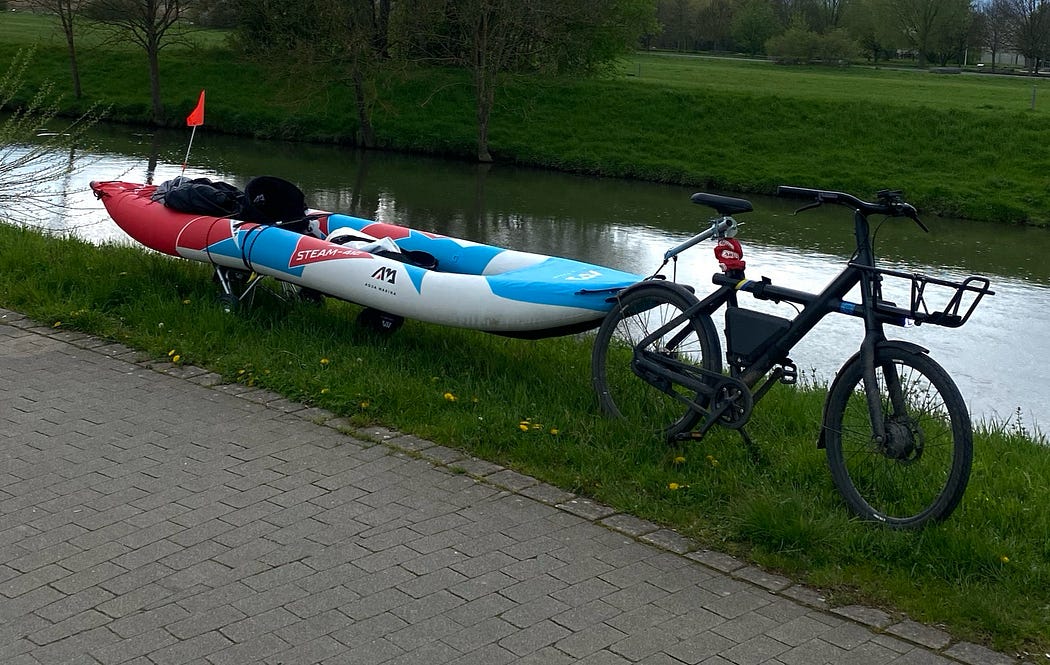
Advocating for Change
Embracing cycling isn’t just a green choice; it’s a step toward better health. Picture your bike as the “Gym of Life” - offering a daily dose of fitness and joy, free of charge.
Here’s how to merge personal well-being with community action:
Advocate: Push for bike-friendly policies by contacting local officials. Your voice matters in shaping a healthier community.
Lead by Example: Swap the car for a bike and inspire those around you. Each ride is a workout, improving your health and setting a positive example.
Join Forces: Participate in community bike rides or events. These gatherings highlight the fun and health benefits of cycling, building momentum for change.
Educate: Share the health perks of cycling. Knowledge is powerful, and understanding the benefits can motivate others to join in.
Demand Safe Paths: Safe cycling infrastructure is crucial. Support organizations that campaign for better bike lanes and facilities.
Track Your Journey: Use apps to monitor your fitness gains from cycling. Celebrating your progress can inspire continued effort and participation.
Associations to Support
For local action, consider supporting your local cycling gang - or similar clubs.
- USA: PeopleForBikes - Advocates for bike-friendly policies and infrastructure.
- Canada: Cycling Canada - Promotes cycling and bicycle safety across the country.
- UK: British Cycling: Offers support for all levels of cyclists in the UK, from beginners to competitive riders.
- World Bicycle Relief: Provides bicycles to people in need, creating access to education, healthcare, and economic opportunities.
- European Cyclists’ Federation: Promotes cycling as a sustainable and healthy means of transportation and recreation in Europe.
- Germany: ADFC: The General German Bicycle Club advocates for safer and more convenient cycling conditions across Germany - or VCD, an advocacy for human-centric mobility.
- France: Fédération Française de Cyclisme: Promotes cycling in all its forms, from leisure to professional racing in France.
- New Zealand: Cycling New Zealand: Encourages and facilitates cycling at all levels in New Zealand.
Each pedal push is a stride toward personal and environmental health. Let’s ride towards a healthier future, together.
Sources
Footnotes
- Michael Jakob Mögele (LMU). Regionale Automobilkulturen zwischen (Re)Produktion und Wandel. https://edoc.ub.uni-muenchen.de/29811/7/Moegele_Michael_Jakob.pdf ↩
- Kurt Möser. AUTO.KULTUR.GESCHICHTE (2013). https://zeithistorische-forschungen.de/sites/default/files/medien/material/2017-3/Moeser_2013.pdf ↩ ↩2
- Umweltbundesamt (2023). Mobilität in den Medien – NaMoW. https://www.umweltbundesamt.de/sites/default/files/medien/11740/publikationen/2023-04-17_texte_56-2023_namow_mobilitaet_in_den_medien.pdf ↩
- Paolo Scaramuzza. "The Car Is Not the Future: On the Myth of Motorized Freedom." https://blog.scaramuzza.me/articles/the_car_is_not_the_future.html ↩ ↩2
- IWU (1999). Fahrradfahren in den Niederlanden und in Deutschland. https://www.iwu.de/fileadmin/publikationen/verkehr/1999_IWU_FladeEtAl_Fahrradfahren-in-den-Niederlanden-und-in-Deutschland.pdf ↩
- Radkultur in den Niederlanden (Fakten & Entwicklung). https://marc-wuebbenhorst.de/onewebmedia/Radkultur-NL.pdf ↩
- Wuppertal Institut (2023). Nachhaltige Mobilität – Strategien und Maßnahmen. https://epub.wupperinst.org/frontdoor/deliver/index/docId/7747/file/7747_Nachhaltige_Mobilitaet.pdf ↩ ↩2
- Umweltbundesamt. Wie umweltfreundlich sind Auto, Zug, Schiff & Co.? https://www.umweltbundesamt.de/themen/verkehr/wie-umweltfreundlich-sind-auto-zug-schiff-co-im ↩